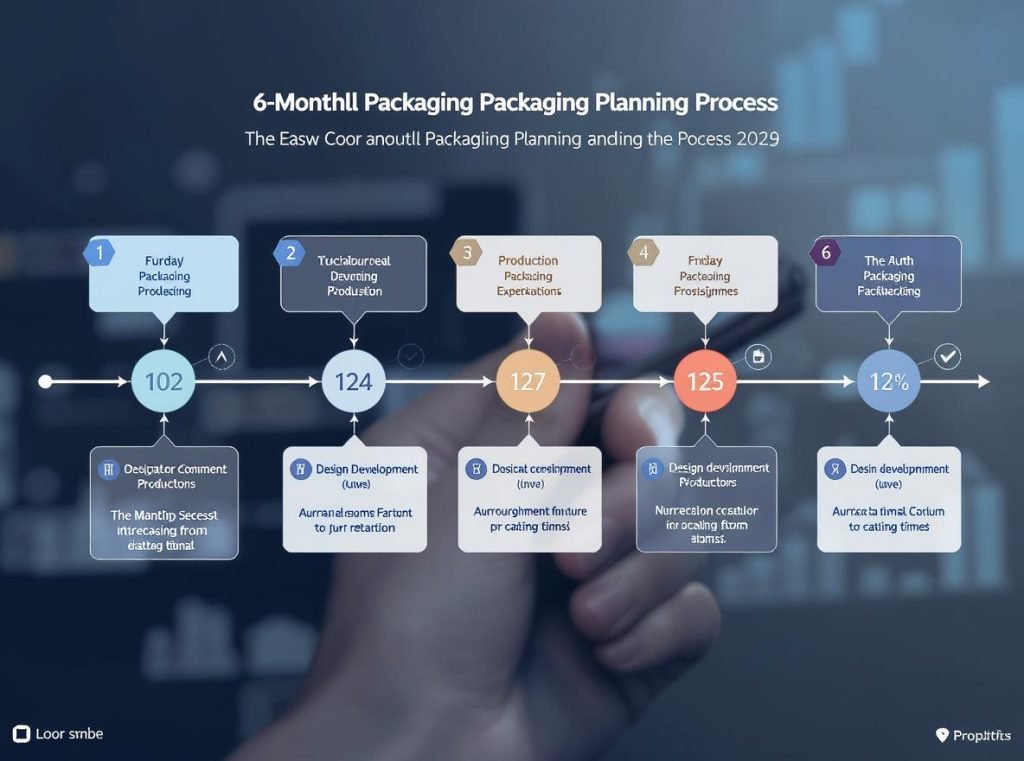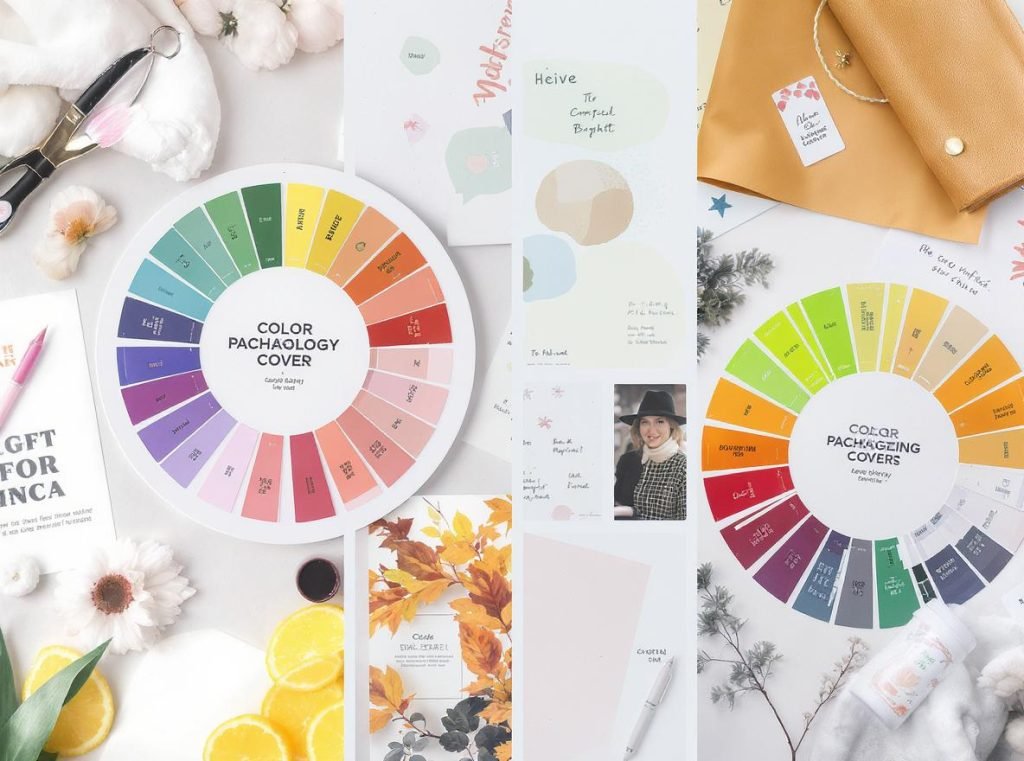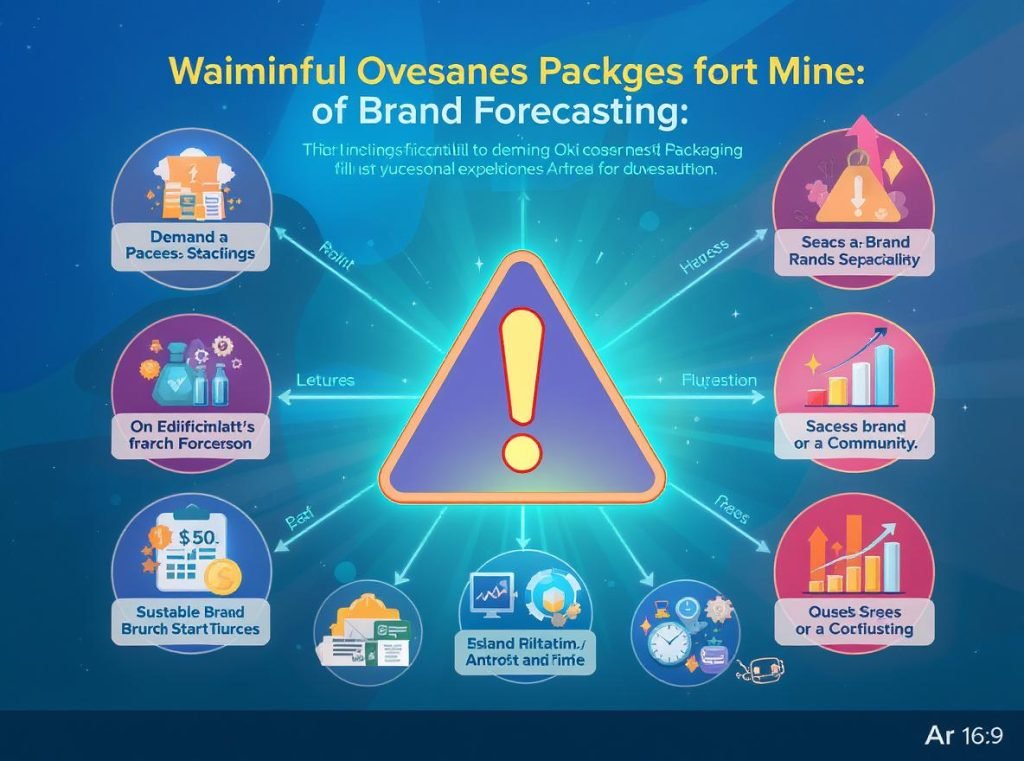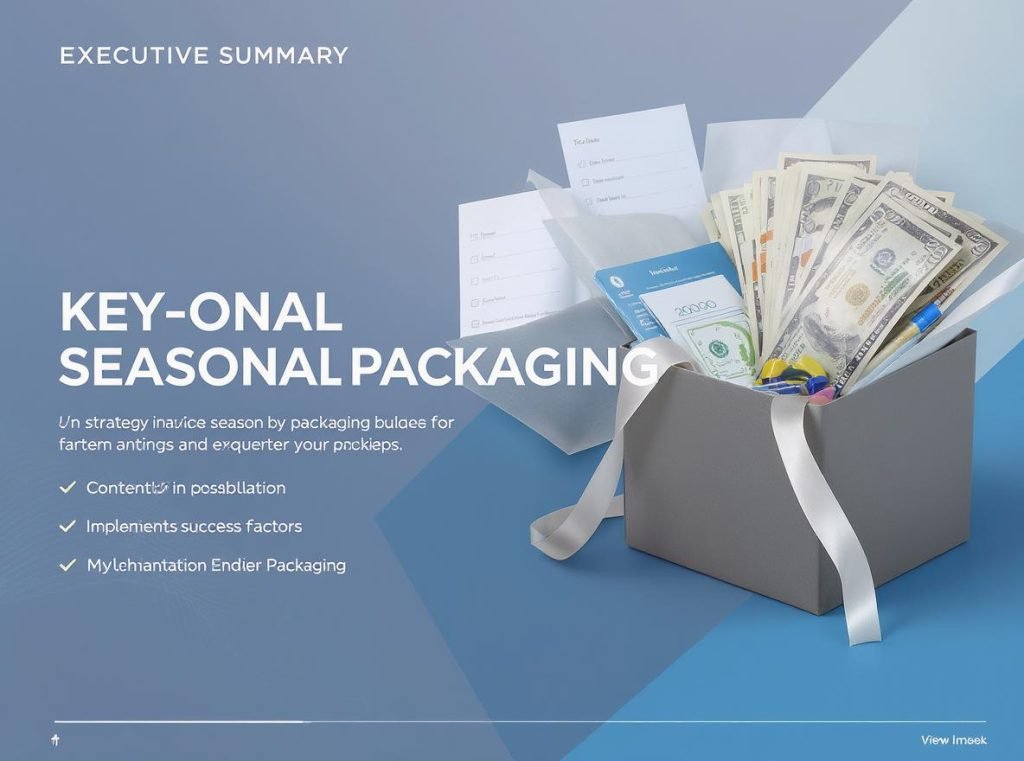Seasonal and limited-edition packaging can drive sales increases of up to 400% during peak periods, yet many businesses struggle with effective implementation. While 72% of consumers are influenced by packaging when making purchase decisions, creating timely, appealing seasonal designs requires strategic coordination across design, production, and marketing functions.
Implementing seasonal or limited-edition custom packaging requires starting 4-6 months before launch, coordinating with experienced manufacturers who understand seasonal capacity constraints, and integrating packaging with comprehensive marketing campaigns that leverage scarcity psychology and emotional connections.
Ready to capitalize on seasonal opportunities? Let’s explore the proven implementation strategies that leading brands use to achieve remarkable seasonal success.
Table of Contents
ToggleWhat Are the Key Benefits of Seasonal and Limited-Edition Packaging?
Understanding the strategic advantages helps justify your investment and shapes your implementation approach for maximum impact.
Seasonal packaging increases sales through enhanced shelf appeal (up to 30% boost), creates emotional connections that drive brand loyalty, and stimulates impulse purchases through scarcity psychology that particularly appeals to younger demographics.

The business impact of seasonal packaging extends far beyond simple aesthetic changes. Research demonstrates that premium packaging designs can boost shelf appeal by up to 30%, while two in five young consumers actively seek out special edition or limited-release items from brands.
Sales Performance Impact:
The sales results can be extraordinary when executed properly. Toblerone’s replacement of its brand name with “Ho Ho Ho” during Christmas 2006 resulted in a remarkable 400% increase in annual sales. More broadly, seasonal volume typically represents one-third of annual shipments for consumer packaged goods companies, highlighting the critical importance of effective seasonal strategies.
Emotional Connection and Brand Loyalty:
Seasonal packaging leverages powerful psychological principles to create emotional connections with consumers. Holiday-themed packaging incorporates nostalgic imagery that transports consumers back to cherished memories, while simultaneously building excitement for upcoming celebrations. Research shows that anticipation of the experience can bring more delight to customers than the actual possession itself.
Impulse Purchase Stimulation:
The limited-time nature creates urgency that encourages impulse purchases. This fear-of-missing-out (FOMO) effect is particularly powerful among younger demographics, with 87% of people now turning to social platforms when making purchasing decisions.
| Benefit Category | Quantified Impact | Timeline for Results |
|---|---|---|
| Sales Increase | Up to 400% boost | Immediate upon launch |
| Shelf Appeal | 30% improvement | Within first week |
| Consumer Preference | 40% seek limited editions | Ongoing engagement |
| Seasonal Volume | 33% of annual sales | Peak seasonal periods |
Gift-Giving Enhancement:
Seasonal packaging transforms ordinary products into suitable gift options, adding perceived value even for everyday purchases. Limited-edition products are particularly effective for gifting during festive seasons, as they help create aesthetic appeal and provide fresh perspective for both current and potential customers.
How Do You Plan Your Seasonal Packaging Timeline?
Proper timeline management determines whether your seasonal packaging captures peak market opportunities or misses critical selling windows.
Begin seasonal packaging planning 4-6 months before target launch dates to accommodate design development, manufacturing lead times, and distribution coordination. Christmas packaging should start planning in June-July to ensure October retail availability.

The seasonal packaging timeline requires careful orchestration across multiple phases due to industry-wide capacity constraints and seasonal demand fluctuations. Industry experts consistently recommend beginning the planning process 4-6 months before the target season to ensure successful implementation.
Critical Planning Phases:
6 Months Before Launch (June for Christmas):
- Define seasonal themes and target market segments
- Conduct competitive analysis and market trend research
- Establish budget parameters and ROI expectations
- Initiate supplier capacity discussions and relationship building
4-5 Months Before Launch:
- Finalize design concepts following brand guidelines
- Select packaging materials and structural requirements
- Negotiate production timelines with experienced manufacturers
- Develop comprehensive marketing campaign strategies
2-3 Months Before Launch:
- Complete design approvals and technical specifications
- Begin production runs with rigorous quality testing
- Coordinate inventory management and distribution logistics
- Prepare marketing materials and campaign launch elements
6 Weeks Before Launch:
- Conduct final quality inspections and packaging approvals
- Finalize logistics and delivery schedules to retail partners
- Brief sales teams and distribution partners on seasonal features
- Launch pre-marketing campaigns to build consumer anticipation
Production Timeline Considerations:
Standard production times vary significantly based on complexity:
• Folding carton packaging: 20-25 business days
• Corrugated boxes: 20-25 business days
• Rigid packaging: 20-35 business days
• Custom pouches: 10-12 days (digital) or 28-30 days (rotogravure)
Holiday packaging should be ordered minimum 6 weeks in advance to account for potential shipping delays and ensure adequate distribution time.
What Design Elements Make Seasonal Packaging Effective?
The visual and structural elements determine customer attraction, brand recognition, and seasonal relevance success.
Effective seasonal packaging utilizes research-backed color psychology, recognizable seasonal imagery, and strategic typography while maintaining brand consistency. Balance seasonal appeal with design sophistication to create premium positioning.

Design effectiveness depends on understanding consumer psychology and seasonal associations. Research indicates that 90% of consumer judgments are influenced by visual factors, with color being a primary component in purchasing decisions.
Color Psychology and Seasonal Associations:
Strategic color selection creates immediate seasonal recognition while maintaining brand identity. Seasonal color associations include:
• Spring: Pastel shades including greens, pinks, and yellows that represent renewal and growth
• Summer: Bright and bold colors such as reds, oranges, and yellows that convey energy and excitement
• Autumn: Warm tones including oranges, browns, and deep reds that suggest harvest and comfort
• Winter: Cool blues, whites, and silver tones that evoke sophistication and celebration
Color Impact on Consumer Behavior:
Color psychology research shows that red creates urgency and passion, making it effective for holiday promotions and clearance sales. Green represents health and nature, appealing to consumers seeking sustainable options, while blue conveys trust and reliability.
Seasonal Imagery and Typography Strategy:
Effective seasonal packaging incorporates recognizable imagery that creates immediate seasonal associations:
| Season | Key Imagery Elements | Typography Approach |
|---|---|---|
| Winter | Snowflakes, Christmas trees, Santa imagery | Elegant, sophisticated fonts |
| Spring | Flowers, Easter symbols, fresh greenery | Light, optimistic typefaces |
| Summer | Beach scenes, sun imagery, outdoor themes | Bold, energetic typography |
| Autumn | Leaves, harvest symbols, warm textures | Warm, comfortable font styles |
Brand Consistency Maintenance:
Successful seasonal packaging maintains core brand identity while incorporating seasonal elements. Brands should strengthen their identity rather than confuse it through excessive seasonal modifications. Key principles include maintaining visual hierarchy that ensures brand elements remain prominent, incorporating seasonal colors within established brand guidelines, and making subtle seasonal logo adaptations without losing recognition.
How Do You Choose the Right Materials for Seasonal Packaging?
Material selection impacts visual appeal, production efficiency, sustainability goals, and overall campaign success.
Select materials that support seasonal design requirements while meeting sustainability expectations and production scalability. Consider eco-friendly options, specialty finishes, and materials that enhance the unboxing experience for gift-giving occasions.

Material decisions significantly influence seasonal packaging success, cost efficiency, and environmental impact. Consumer demand for sustainable packaging has made environmental considerations critical, with 60% of consumers willing to pay more for products with sustainable packaging.
Sustainable Material Options:
Environmental responsibility drives material selection decisions. Sustainable seasonal packaging options include:
• Recyclable materials: Cardboard, kraft paper, and biodegradable plastics that maintain structural integrity
• Reusable packaging: Sturdy boxes and cloth bags that serve dual purposes beyond initial purchase
• Plant-based alternatives: Compostable film wraps and agricultural byproduct materials
• Eco-friendly embellishments: Biodegradable ribbons, soy-based inks, and seed paper tags
Material Performance Comparison:
| Material Type | Cost Impact | Environmental Score | Production Flexibility | Visual Appeal |
|---|---|---|---|---|
| Standard Cardboard | Low | Moderate | High | Good |
| Recycled Materials | Medium | High | High | Excellent |
| Specialty Papers | High | Variable | Medium | Very High |
| Plant-Based Options | High | Very High | Medium | Good |
Specialty Finishes and Treatments:
Modern printing technologies enable sophisticated effects that were previously cost-prohibitive for seasonal runs. Digital printing allows brands to easily add QR codes to seasonal packaging, offering customers instant access to product details, exclusive promotions, and personalized content.
Advanced Material Enhancements:
• Metallic foiling: Adds premium appeal for holiday and special occasion packaging
• Soft-touch coatings: Creates tactile experiences that enhance perceived value and gift appeal
• Embossed elements: Provides dimensional interest and premium positioning
• Window panels: Allows product visibility while maintaining seasonal theme protection
Production Efficiency Considerations:
Digital printing provides greater flexibility for smaller runs and faster turnaround times, making it particularly suitable for seasonal campaigns. This approach allows brands to test seasonal designs without overcommitting to inventory that may not sell.
What Production Strategies Ensure Successful Implementation?
Production planning determines whether seasonal packaging launches successfully or faces costly delays and quality issues.
Implement flexible production strategies that accommodate seasonal demand fluctuations while maintaining quality standards. Partner with manufacturers experienced in seasonal capacity management and utilize digital printing for improved flexibility.

Production success requires balancing efficiency with flexibility to handle seasonal demand spikes. Advanced applications of digital and flexographic printing provide increased opportunity to deploy a wide variety of short-run packaging events and variations.
Manufacturing Capacity Management:
Seasonal packaging presents unique production challenges including throughput limitations, production capability restrictions, and financial procurement requirements. Seasonal demand forecasting error rates are approximately 40% higher than for non-seasonal products, requiring sophisticated planning approaches.
Digital vs. Traditional Printing Considerations:
Digital printing offers significant advantages for seasonal packaging implementation:
• Faster turnaround times: 10-12 days versus 28-30 days for traditional rotogravure
• Smaller minimum orders: Enabling testing without overcommitting inventory
• Greater design flexibility: Allowing last-minute modifications and personalization
• Reduced waste generation: Minimizing overproduction and material waste
Inventory Management Strategies:
Effective seasonal packaging requires sophisticated inventory management to balance supply with fluctuating demand:
• Phased production: Manufacture in stages to test market response and adjust quantities
• Historical data analysis: Examining past seasonal performance to identify demand patterns
• Safety stock planning: Maintaining buffer inventory for unexpected demand spikes
• Flexible production scheduling: Adapting manufacturing capacity for seasonal peaks
Quality Control Protocols:
Establish rigorous quality standards that account for seasonal packaging’s higher visibility and customer expectations. This includes color consistency verification, structural integrity testing under seasonal environmental conditions, and functionality assessment for gift-giving applications.
Supply Chain Coordination:
Successful seasonal packaging depends on close coordination across the entire supply chain:
| Coordination Area | Key Requirements | Timeline Considerations |
|---|---|---|
| Supplier Relationships | Reliable capacity during peaks | 4-6 months advance notice |
| Production Scheduling | Flexible capacity allocation | Seasonal demand patterns |
| Quality Management | Accelerated testing protocols | Built into production timeline |
| Distribution Planning | Peak period logistics | Coordinated with retail partners |
How Do You Integrate Seasonal Packaging with Marketing Campaigns?
Successful seasonal packaging requires coordinated marketing efforts that maximize visibility and create purchase urgency.
Integrate seasonal packaging launches with comprehensive omnichannel marketing campaigns that emphasize scarcity, create emotional connections, and drive immediate action. Coordinate timing across digital platforms, retail partnerships, and social media channels.

Marketing integration amplifies seasonal packaging investment returns through synchronized messaging and strategic timing. With 63% of consumers now shopping for holiday gifts online, packaging must work effectively across both physical and digital touchpoints.
Omnichannel Experience Development:
Modern seasonal packaging strategies must account for multiple consumer touchpoints:
• Digital marketing alignment: Coordinating packaging visuals with online advertising campaigns
• Social media integration: Creating packaging experiences that encourage user-generated content
• In-store merchandising: Aligning packaging design with retail display strategies
• E-commerce optimization: Ensuring packaging photographs effectively and creates memorable unboxing experiences
Scarcity Marketing Psychology:
Emphasize the limited nature of seasonal packaging to drive immediate action. Use messaging like “limited edition,” “while supplies last,” and “exclusive seasonal collection” to create urgency and justify premium pricing. This approach leverages the fear-of-missing-out psychology that drives consumer behavior.
Content Marketing Integration:
Develop comprehensive content strategies that showcase seasonal packaging:
• Behind-the-scenes content: Share design and production processes to build anticipation
• User-generated content campaigns: Encourage customers to share unboxing experiences
• Seasonal storytelling: Connect packaging to seasonal emotions and cultural celebrations
• Educational content: Explain special features and sustainability benefits
Multi-Channel Campaign Coordination:
Ensure consistent messaging across all marketing channels:
| Channel | Key Messaging | Timing Coordination |
|---|---|---|
| Social Media | Visual appeal, shareability | Pre-launch teasers |
| Email Marketing | Exclusivity, early access | Subscriber priorities |
| Retail Partnerships | Shelf placement, promotions | Synchronized launches |
| Digital Advertising | Urgency, limited availability | Peak shopping periods |
Promotional Strategy Integration:
Seasonal packaging should complement promotional strategies rather than compete with them. Effective integration includes incorporating limited-time messaging into packaging design, highlighting seasonal packaging as gift-suitable, and connecting seasonal packaging with other marketing initiatives.
What Common Mistakes Should You Avoid?
Learning from typical implementation errors saves time, money, and market opportunities while ensuring campaign success.
Avoid late planning initiation, excessive design complexity, poor demand forecasting, and insufficient supplier coordination. These mistakes can derail seasonal campaigns and waste significant marketing investments.

Many businesses make predictable errors that undermine seasonal packaging success. Understanding these pitfalls helps implement more effective strategies and avoid costly mistakes.
Timeline and Planning Mistakes:
The most critical error is inadequate advance planning. Common timing mistakes include:
• Late planning initiation: Starting design processes too close to launch deadlines
• Insufficient lead time: Underestimating production and distribution requirements
• Supplier capacity oversight: Failing to account for industry-wide seasonal demand
• Approval process delays: Underestimating time required for stakeholder approvals
Demand Forecasting Errors:
Overestimating seasonal demand represents one of the most significant financial risks. Seasonal demand forecasting error rates are approximately 40% higher than non-seasonal products, leading to:
• Excess inventory: Overproduction that requires post-season discounting
• Optimistic assumptions: Unrealistic expectations about consumer response
• Insufficient market research: Misunderstanding target audience preferences
• Poor historical analysis: Failing to examine past seasonal performance patterns
Brand Identity Dilution:
Seasonal packaging can damage brand recognition if not carefully managed:
| Risk Category | Common Mistakes | Prevention Strategies |
|---|---|---|
| Visual Identity | Excessive design departure | Maintain brand guidelines |
| Color Strategy | Complete palette abandonment | Incorporate seasonal within brand colors |
| Logo Treatment | Unrecognizable modifications | Subtle seasonal adaptations |
| Messaging Consistency | Conflicting brand voice | Establish seasonal messaging guidelines |
Sustainability Oversight:
Ignoring environmental considerations can damage brand reputation and miss market opportunities. With 63% of consumers less likely to purchase products with environmentally harmful packaging, sustainability mistakes include:
• Material selection negligence: Choosing materials that conflict with environmental goals
• Waste generation excess: Creating packaging that generates unnecessary disposal issues
• End-of-life planning failure: Not considering recycling and disposal implications
• Consumer expectation misalignment: Failing to meet growing environmental expectations
Operational Efficiency Challenges:
Seasonal packaging can create significant operational complications:
• Storage capacity planning: Underestimating space requirements for seasonal inventory
• Labor resource allocation: Insufficient staffing for seasonal volume increases
• Material handling complexity: Creating packaging that complicates fulfillment processes
• Quality control shortcuts: Rushing production without adequate testing protocols
How Do You Measure Seasonal Packaging Success?
Tracking comprehensive metrics helps optimize future campaigns and demonstrate ROI to stakeholders.
Measure success through sales performance comparisons, customer engagement metrics, operational efficiency indicators, and sustainability impact assessments. Use ROI calculations that account for both immediate sales impact and long-term brand value creation.

Effective measurement requires establishing clear success metrics before launch and tracking performance throughout the campaign lifecycle. Comprehensive evaluation enables continuous improvement and strategic optimization.
Sales Performance Metrics:
Primary success indicators focus on quantifiable business impact:
• Revenue growth: Comparing seasonal period sales to previous years and standard packaging performance
• Unit sales increases: Measuring volume changes directly attributable to seasonal packaging
• Market share gains: Assessing competitive positioning during seasonal periods
• Price realization: Evaluating ability to maintain or increase pricing with seasonal packaging
ROI Calculation Methodology:
ROI = (Return – Investment) / Investment × 100%
This formula should account for:
- Additional sales generated during seasonal periods
- Total seasonal packaging costs including design, production, and marketing
- Long-term brand value improvements
- Customer lifetime value enhancements
Customer Engagement Indicators:
Engagement metrics provide insights beyond immediate sales performance:
| Metric Category | Measurement Approach | Success Indicators |
|---|---|---|
| Social Media Interaction | Shares, likes, user-generated content | Above-average engagement rates |
| Customer Satisfaction | Post-purchase surveys, review analysis | Positive seasonal packaging feedback |
| Brand Recognition | Aided/unaided brand recall studies | Increased seasonal brand awareness |
| Repeat Purchase Behavior | Customer retention analysis | Higher seasonal customer loyalty |
Operational Efficiency Measures:
Internal performance indicators evaluate implementation effectiveness:
• Production efficiency: Measuring output per unit input during seasonal production
• Material utilization rates: Assessing packaging material usage optimization
• Order fulfillment accuracy: Tracking packaging and shipping error rates during peak periods
• Lead time performance: Measuring time from order placement to retail availability
Sustainability Impact Assessment:
Environmental metrics increasingly influence seasonal packaging evaluation:
• Material waste reduction: Measuring decreases in packaging waste generation
• Sustainable material usage: Tracking percentage of eco-friendly materials utilized
• Consumer response to sustainability: Evaluating customer appreciation for environmental efforts
• End-of-life impact: Assessing recyclability and disposal outcomes
Performance Benchmarking:
Establish benchmarks for continuous improvement:
• Industry comparisons: Measuring performance against sector standards and best practices
• Historical performance: Comparing current results to past seasonal campaigns
• Competitive analysis: Evaluating performance relative to competitor seasonal initiatives
• Best practice identification: Documenting successful approaches for future application
Summary
Implementing seasonal and limited-edition custom packaging requires strategic planning starting 4-6 months before launch, careful material selection that balances sustainability with visual appeal, and coordinated marketing campaigns that leverage scarcity psychology. Success depends on avoiding common mistakes like late planning and demand overestimation while measuring comprehensive performance metrics that demonstrate ROI and guide continuous improvement.

Ready to implement seasonal packaging that drives remarkable results? Contact Acreet for expert consultation on custom packaging design and production. Our experienced team understands seasonal manufacturing requirements and can help you navigate the complete implementation process from concept to retail success.


